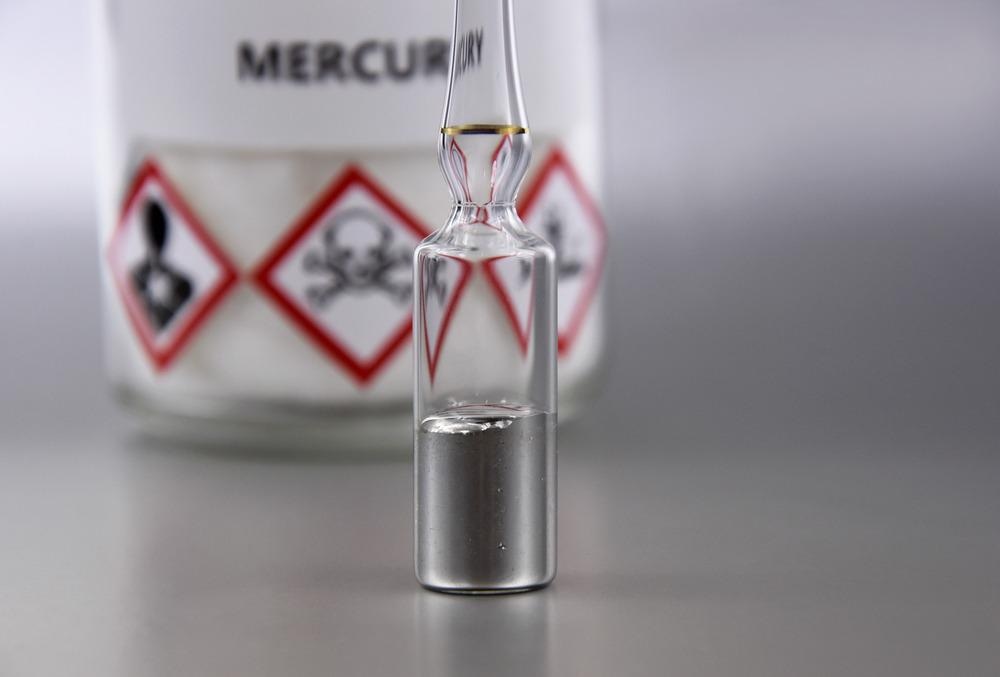Solid-state nanofluidic channels are promising tools for selective sensing of analytes. However, delayed interaction of recognition moieties with analytes hinders their application in rapid detection devices. In an article recently published in the journal Analytical Chemistry, the researchers fabricated two-dimensional covalent organic frameworks (2D COFs) to integrate them into solid-state nanofluidic channels and achieve selective, sensitive, and rapid recognition units that can detect the contaminants in sample analytes.

Study: Integrating Ordered Two-Dimensional Covalent Organic Frameworks to Solid-State Nanofluidic Channels for Ultrafast and Sensitive Detection of Mercury. Image Credit: BeataGFX/Shutterstock.com
Rapid Sensors to Detect Sample Analytes
Human health-threatening contaminants, including heavy ions, biotoxins, veterinary drugs, foodborne pathogens, and pesticides present in food and the environment call for robust analytical platforms for rapid detection of these contaminants.
Although high-performing liquid or gas chromatography-equipped mass spectrometry, electrochemical detection, and fluorescence sensing serve the purpose of analysis in real samples, more sensitive, rapid, selective, and portable analysis equipment is highly desirable.
Solid-state nanofluidic channels functionalized with a specific recognition moiety are sensitive and selective towards sensing specific analytes. To this end, nanofluidic sensors are sensitive to even a single molecule causing steady-state current changes attributed to the nanofluidic channel’s chemical change, wettability, surface charge, and diameter.
Introducing specific recognition moieties, including phenylboronic acid, aptamer, antibodies, and metal-organic frameworks (MOFs) into nanofluidic channels can improve target-specific selectivity. However, the time-delayed interaction between recognition moieties and targets limits the use of nanofluidic channel-based sensors as rapid detectors.
Thus, it is critical to improve the interaction kinetics between the recognition moieties and analytes on the nanofluidic channels. The crystalline COFs have ordered structure, permanent pores, and large surface area and are known to have enhanced kinetics for interaction with analytes, suggesting that the 2D COFs can be promising nanofluidic channels.
2D COFs for Mercury (Hg (II)) Recognition
In the present study, the researchers designed a nanofluidic sensor based on 2D COF functionalized anodic aluminum oxide (AAO) for precise and rapid detection of contaminants. 2D thiourea-linked COF (JNU-3)-functionalized AAO (JNU-3@AAO) was fabricated by decorating the AAO’s outer surface with JNU-3 via covalent interaction.
Further, the sensitivity of the prepared nanofluidic sensor was confirmed by selecting Hg (II) as the analyte. The affinity of JNU-3 for Hg (II) promoted selectivity and kinetics in JNU-3@AAO-based sensors for Hg (II) recognition. These sensors were ideal for practical applications in detecting Hg contamination in water and rice samples.
Research Findings
Scanning electron microscope (SEM) images showed that the AAO reaction with (3-aminopropyl)-triethoxysilane (APTES) resulted in a smoother surface than the original AAO confirming the formation of AAO-amine (NH2). Subsequent reaction of AAO-NH2 with COF monomer resulted in a color change from white to dark orange indicating growth of JNU-3.
Controlling the concentration of COF monomer tuned the amount of bonded JNU-3. Increasing 1,3,5-triformylphloroglucinol (Tp) concentration from 0.05 to 0.1 mole per liter resulted in a darker color of nanochannels. SEM images revealed that with the increased concentration of Tp to 0.075 moles per liter, the obtained JNU-3 covered all the channels, and an extended increase to 0.1 moles per liter resulted in a reaction tube filled with COF that decreased the reproducibility of JNU-3@AAO.
The spectra of AAO-NH2 obtained from X-ray photoelectron spectroscopy (XPS) showed peaks of nitrogen (N) 1s and silicon (Si) 2p, which depicted the introduction of the -NH2 group from APTES. Similarly, the XPS spectra of JNU-3@AAO showed a peak of sulfur (S) 2p, indicating the growth of JNU-3 on AAO-NH2.
The change in contact angle and zeta (ζ-) potential also proved the formation of JNU-3@AAO. On introducing the -NH2 with a positive charge, the ζ-potential changes from −43.3 ± 1.8 to −11.8 ± 1.3 electronvolts. The in situ reaction of JNU-3@AAO with Tp and 1,4-phenylenebis-(thiourea) (Pa-S) resulted in a further drop in ζ-potential to −42.1 ± 3.1 electronvolts, and this drop is attributed to the negative charge on JNU-3.
The contact angle of JNU-3@AAO increased from 17.2 ± 1.4 to 35.1 ± 0.6 degrees due to the alkyl chain of APTES. An additional increase in contact angle to 49.5 ± 1.9 degrees was observed after the reaction of JNU-3@AAO with Tp and Pa-S, due to the lower hydrophilicity of JNU-3.
Powder X-ray diffraction (PXRD) patterns of AAO-NH2 showed no PXRD peaks. However, JNU-3@AAO revealed the presence of two characteristic peaks of JNU-3 at 3.50 and 5.99 degrees, indicating the JNU-3 crystallinity on AAO-NH2.
Conclusion
In summary, the researchers designed and fabricated thiourea-linked COF-functionalized AAO as a nanofluidic sensor to detect Hg (II). A JNU-3@AAO sensor was developed in situ to recognize Hg (II). JNU-3 consists of ordered channels that greatly promote the kinetics of interaction between JNU-3@AAO and Hg (II) - this allows ultrafast detection of Hg (II) in real samples.
More from AZoNano: Using Nanotechnology to Detect Animal-Borne Diseases
Disclaimer: The views expressed here are those of the author expressed in their private capacity and do not necessarily represent the views of AZoM.com Limited T/A AZoNetwork the owner and operator of this website. This disclaimer forms part of the Terms and conditions of use of this website.
Source:
Ran, X. Q., Qian, H. L., and Yan, X. P. (2022). Integrating Ordered Two-Dimensional Covalent Organic Frameworks to Solid-State Nanofluidic Channels for Ultrafast and Sensitive Detection of Mercury. Analytical Chemistry. https://pubs.acs.org/doi/abs/10.1021/acs.analchem.2c01595